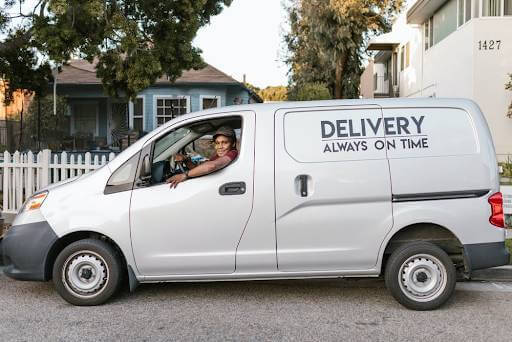Damaged shipments can be a huge drain on your company. Every time a shipment is damaged, you not only have to replace it or refund your customer’s money, you also now run the risk of losing that customer forever because they weren’t satisfied with the level of service you provided.
Of course, you can’t always protect shipments. Sometimes, things just happen. But you shouldn’t just sit back and shrug your shoulders about it, either. Follow these five easy steps to make shipping damage less of a hassle — and less of a drain on your company finances.
 1) Know What Shipments Face in Transit
1) Know What Shipments Face in Transit
Before you can effectively protect your shipments from the stresses they face on impact, you need to know what those stresses are. That’s why many companies who do a lot of shipping, and especially those who ship delicate, expensive, or temperature controlled items, use shock loggers to get a more complete picture of the vibrations, impacts, and temperature swings their shipments endure.
A shock logger for fragile freight can collect data on the stresses your shipment experiences in real time, letting you know when it’s been thrown or dropped, allowed to get too hot or cold, or subjected to road vibrations for an extended period. Of course, you don’t necessarily need this data in real time, and you can buy less expensive devices that collect the data in transit for you to read with an RFID scanner at the destination.
2) Choose Pallets and Shipping Containers Carefully
You need to make sure that pallets and containers you choose for your shipments are the right size and undamaged. Many shipping materials, like cardboard boxes and air pillows, aren’t meant to be used more than once, so you should always use new ones for every shipment. Things like pallets, shipping containers and plastic shipping boxes can of course be reused, but you want to make sure the pallets and containers you choose are structurally sound, so they can do their job of protecting your shipments.
In cases where more durable solutions are needed, exploring options like Premier Shipping Containers AU’s range of new and used containers can provide sturdy and dependable choices. These containers are particularly beneficial for shipments that require extra protection against impacts and environmental conditions, supporting a smoother and safer transit experience.
3) Package Items with Hot or Cold Packs as Needed
There are plenty of things that need to be shipped in refrigerated trucks or with hot and cold packs. If you’re reading this, chances are you’re just getting into the shipping game and haven’t figured out how to keep your contents cool or warm as required during shipping.
Most things that you ship through the regular mail can be kept at the right temperature with hot or cold packs. Things like plants and reptiles may need hot packs to stay appropriately warm during shipping, at least at some times of the year. Beneficial garden organisms, fresh flowers, and food items might need to be kept cold, either with dry ice or with refrigerant gel packs. Make sure you use the appropriate insulation inside your package so contents stay at the right temperature, and ship temperature sensitive items as fast as possible to minimize the risk that contents will get too hot or cold.
4) Minimize Movement of the Contents
Sure the contents of shipping boxes with the appropriate padding to keep them from moving and to protect them from pressure and impacts. For example, wine bottles need to be shipped within special sleeves, and laptops need special boxes and padding. All of this helps keep the items still within their boxes in transit, so they have fewer chances to sustain damage.
5) Fill Your Trucks and Shipping Containers All the Way
Whether you’re using shipping containers or trucks to ship your items, make sure they’re filled all the way up. If your packages have room to move around inside the shipping container or truck, then the delicate items within will sustain more damage than they would have if the packages had remained relatively stable within the shipping container or truck box. Just like you don’t want the contents of your packages moving around inside them and smacking into one another, you don’t want your packages flying around the back of the truck and slamming into other packages, whether they’re yours or a competitor’s.
Make sure you choose a full truckload (FTL) carrier so your items have less space inside the truck to slide around and sustain damage. Less than truckload (LTL) carriers may not fill their trucks up all the way, or they may fill their trucks up with deliveries for multiple vendors. That means the driver will be interacting with the contents of his or her truck a lot more often, stopping to unload different things at different points along his or her route, and introducing that many more chances for something to get broken.
Freight damage can often be avoided if you know what you’re doing. Follow these easy steps to protect your shipments, nurture your customer relationships, and boost your bottom line.

Founder Dinis Guarda
IntelligentHQ Your New Business Network.
IntelligentHQ is a Business network and an expert source for finance, capital markets and intelligence for thousands of global business professionals, startups, and companies.
We exist at the point of intersection between technology, social media, finance and innovation.
IntelligentHQ leverages innovation and scale of social digital technology, analytics, news, and distribution to create an unparalleled, full digital medium and social business networks spectrum.
IntelligentHQ is working hard, to become a trusted, and indispensable source of business news and analytics, within financial services and its associated supply chains and ecosystems





























